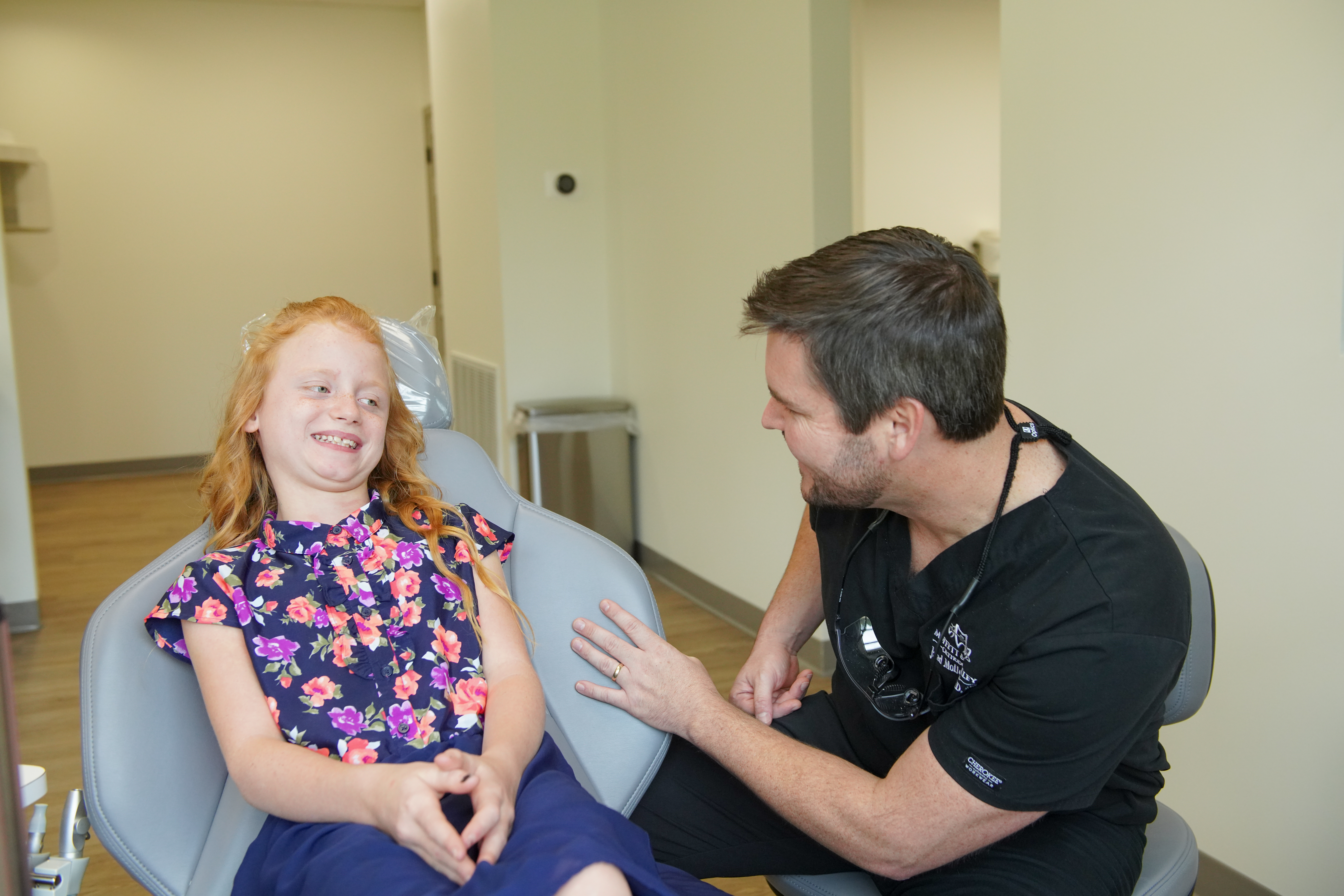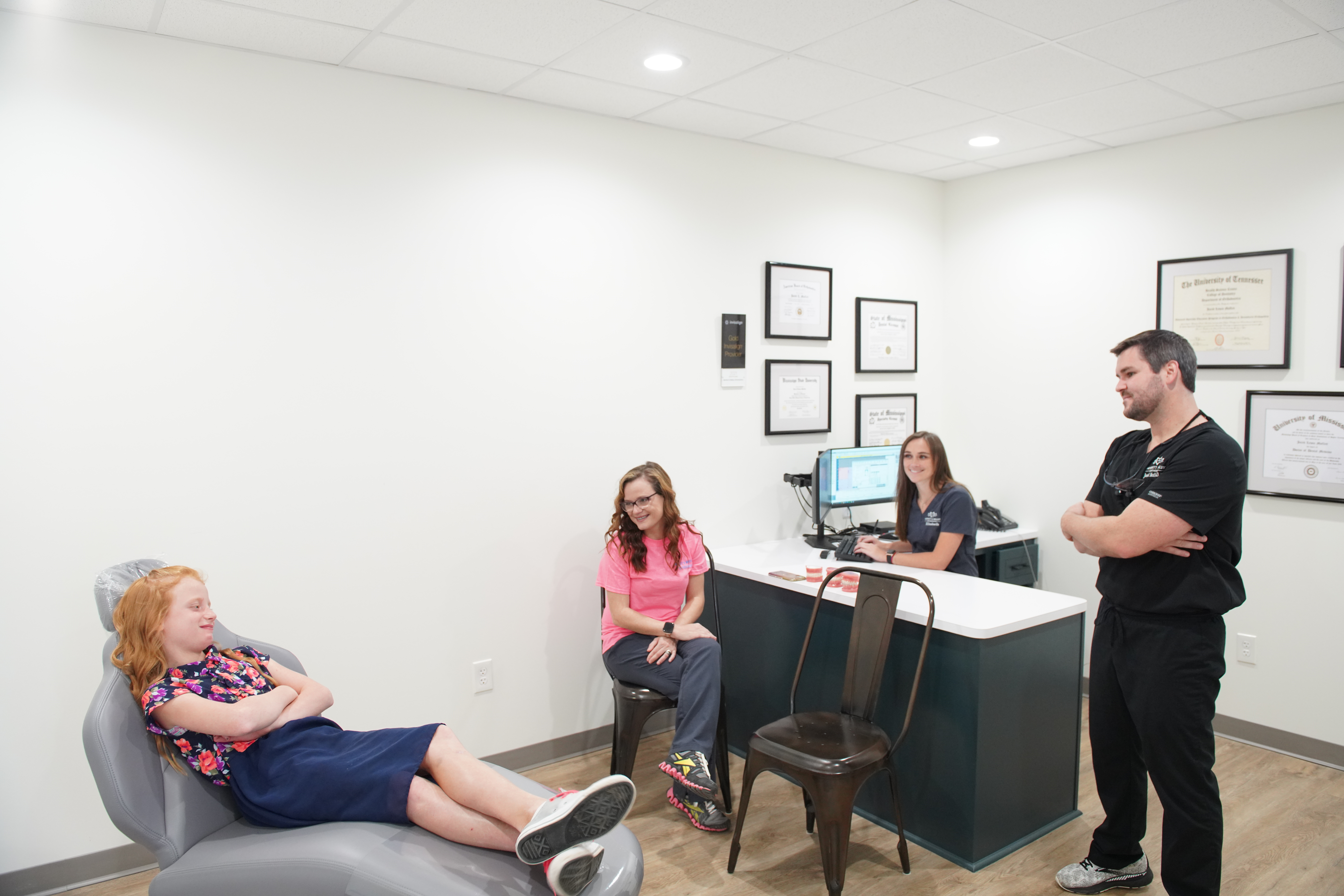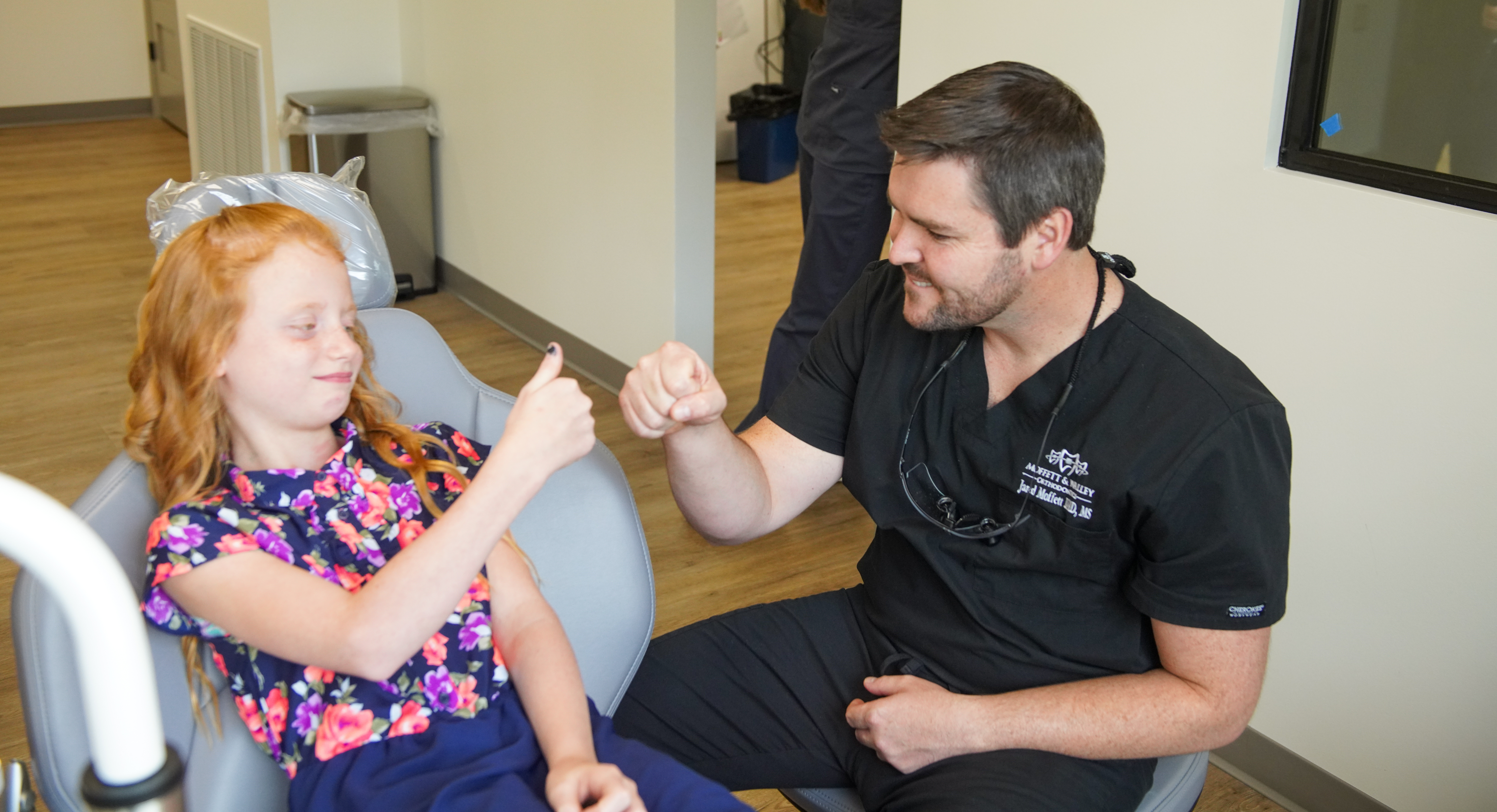Understanding Two-Phase Orthodontic Treatment
Before we get into the how, let’s talk a little bit about the what! Two-phase treatment is a comprehensive approach to care that addresses orthodontic concerns in two distinct stages, each with its unique objectives and treatments. The initial phase typically commences when a child is around seven to nine years old, a period when they have both baby and permanent teeth. This phase concentrates on rectifying specific issues that, if addressed early, can significantly enhance long-term treatment outcomes or simplify later orthodontic procedures.
Following the first phase, patients are periodically monitored as their permanent teeth continue to grow, develop, and erupt. The second phase, which may involve braces or aligners, is initiated once the child is older and has all their permanent teeth. This phase finalizes both alignment and bite correction, ultimately resulting in a beautifully functional smile.
Common Orthodontic Issues Treated
Two-phase orthodontic treatment is a proactive approach designed to intercept and address specific orthodontic concerns in two separate stages. The initial phase typically begins when a child is around seven to nine years old, and both permanent and baby teeth are present. This phase focuses on correcting specific issues that, if dealt with early, can significantly improve treatment outcomes long-term or simplify later treatment.
Here are some of the common orthodontic issues that two-phase treatment can effectively address:
- Dental Crowding: When there isn’t enough space in the jaw to accommodate all the teeth, dental crowding can occur. Two-phase treatment can create space in the mouth by addressing crowding issues early on, allowing the remaining teeth to align correctly.
- Crossbites and Overbites: Crossbites (where upper teeth fit inside the lower teeth) and overbites (excessive overlap of upper teeth over lower teeth) can be corrected more effectively during two-phase treatment, promoting a balanced bite.
- Underbites: An underbite occurs when the lower teeth protrude in front of the upper teeth. Early intervention with two-phase treatment can guide proper jaw growth and alignment, reducing the severity of underbites.
- Protruding Teeth: If your child has front teeth that stick out prominently, two-phase treatment can help guide these teeth into a more aesthetically pleasing position, reducing the risk of injury and improving appearance.
- Impacted Teeth: Sometimes, permanent teeth may fail to emerge properly due to space issues or obstructions. Two-phase treatment can address these problems, preventing potential complications such as infections and pain.
Benefits of Two-Phase Treatment
Opting for two-phase orthodontic treatment offers several advantages:
- Early Intervention: By addressing orthodontic issues during the first phase, we can intercept problems before they worsen. This often results in shorter and less complicated treatment during the second phase.
- Improved Bite and Alignment: Two-phase treatment helps guide proper jaw growth and tooth alignment, leading to a healthier bite and a more harmonious smile.
- Preventative Approach: Early intervention can prevent serious dental problems from developing, potentially reducing the need for extensive treatments later in life.
- Boosted Confidence: Correcting orthodontic issues early can boost your child’s self-esteem by providing them with a confident and attractive smile.
What Treatment Options Are Used During Two-phase Treatment?
Every smile is just as unique as its owner. That’s why we offer specialized treatment plans like two-phase orthodontic treatment to take care of all sorts of early orthodontic issues effectively. But what exactly can you expect from this treatment approach, and how can it benefit your child’s smile?
Treatment Options in the First Phase
The initial phase of two-phase orthodontic treatment is crucial for identifying and addressing specific orthodontic issues early on. Some of the treatment options employed during this phase include:
- Space Maintainers: In situations where baby teeth are lost prematurely, space maintainers can be utilized. These devices preserve the gap left by the missing tooth, ensuring there’s enough space for the permanent tooth to erupt correctly.
- Palatal Expanders: Palatal expanders are used when the upper jaw is too narrow, causing crowding or bite issues. These devices gently widen the upper jaw to create adequate space for incoming permanent teeth.
- Functional Appliances: Functional appliances, such as headgear or Forsus springs, are employed to correct issues like overbites or underbites by modifying jaw growth patterns.
- Early Orthodontic Intervention: For certain cases, Dr. Moffett may recommend limited braces or aligners during the first phase to address specific tooth alignment concerns. These treatments aim to simplify the second phase.
Treatment Options in the Second Phase
Once the child has all their permanent teeth, typically around the ages of 11-14, the second phase of treatment begins. This phase often involves more comprehensive orthodontic solutions to finalize alignment and bite correction. Common treatment options during the second phase include:
- Traditional Braces: Traditional braces remain an excellent option for achieving precise tooth alignment and bite correction. They consist of brackets attached to the teeth and connected by wires, which are periodically adjusted to guide teeth into their ideal positions.
- Invisalign: Invisalign offers a discreet alternative to traditional braces. These clear, removable aligners gradually shift teeth into alignment. They are especially popular among older teens who prefer a less conspicuous orthodontic solution.
- Retainers: After the active orthodontic treatment phase, retainers are typically prescribed to maintain the achieved results. They help ensure that teeth remain in their corrected positions.
- Orthodontic Appliances: In complex cases, we may use additional orthodontic appliances to fine-tune bite alignment and jaw positioning. Dr. Moffett will determine the most suitable approach based on individual patient needs.
Call Today for a Free Consultation!
We’re committed to your care, and that’s why every treatment plan is customized to be just what and when you need it! Two-phase orthodontic treatment means we can address issues proactively, ensuring that your child’s smile develops beautifully and functions perfectly. If you’re considering orthodontic treatment for your child or have questions about two-phase treatment, please don’t hesitate to reach out to us. We’re the Jackson area’s smile solution, with conveniently located Clinton and Madison offices, and consultations are always free!
We can’t wait to introduce you to your smile!


